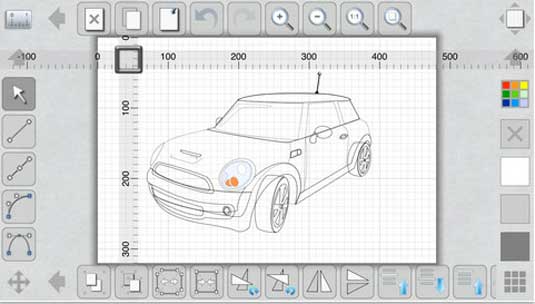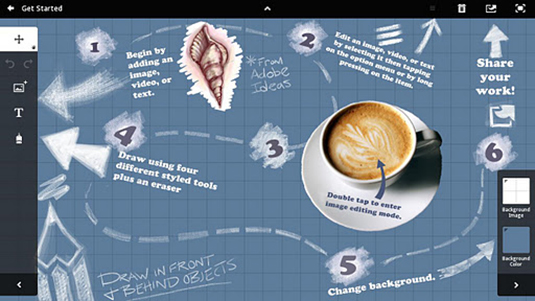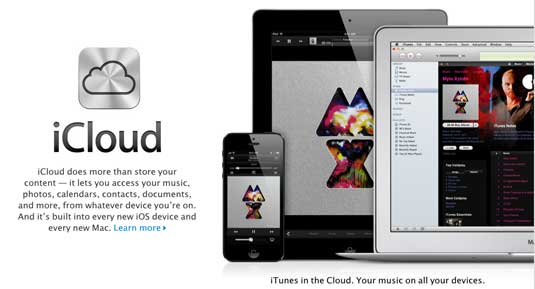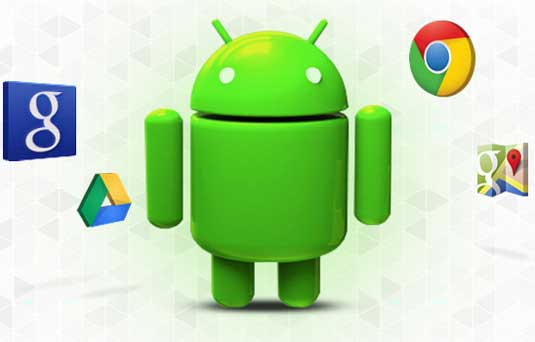Is Android a serious choice for creatives?
Apple has traditionally been the go-to platform for creatives, but Android is mounting a strong challenge. Dave Lee of Numero examines the pros and cons of each platform.
Gone are the days when the choice between Apple and Android was a no-brainer for creative professionals. Once, the list of pros and cons for each were lengthy and easily distinguished. However, today there's much more grey area over which platform does what better.
There used to be only one device, Apple, that could access specific tools and services. But now Android has upped its game, become a keen competitor, and taken a significant percentage of the market.
Many designers have formed a strong attachment and loyalty to Apple's operating system. But how much is that loyalty justified, and is the fear of Android as an inferior system based on fact or prejudice?
The cool factor

It's unarguable that Apple still wears the crown for producing the 'coolest' devices on the market, both in terms of the sleek look of the hardware, the snappy interface and the range of apps. And the App Store offers an unlimited range of tools, from iDesign and Adobe Photoshop Express to iBlue Sky, giving creative professionals the freedom to begin, edit and finish their projects either on the move or in the studio.
In general, too, Apple's App Store is still way ahead of its competitors in terms of the range and number of apps, with a quoted 650,000 according to Apple’s Q3 figure.
The rise of Android

However, Android is coming up fast behind iOS and now appears to be in the lead for the number of downloads. It's been widely reported that Android users are now downloading more mobile apps than iPhone and iPad users, with a 44% share compared to Apple's 31% share.
Android has also entered the creative market and now offers a competitive gallery of applications of use to professionals, from Collage to Fresco Paint, and even TED (for more, see our article on The best Android apps for creatives). Significantly, these and other Android apps can be transferred between each device the user owns.
Daily design news, reviews, how-tos and more, as picked by the editors.
It also goes without saying that Android devices are normally cheaper than Apple's premium-priced products.
Policing and security
One major issue that is that Google doesn’t strictly police app approval like Apple does. The benefit of this is that the approval time of apps is much shorter, which is great for developers. The downside is the lack of quality control means there are an increasing number of fraudulent apps, according to recent research from AegisLab.
In comparison, Apple offers a much more secure platform, limiting access to various programs, which is potentially frustrating for developers but overall probably beneficial to the end user.
Cloud formations

Another USP for Apple has been iCloud. Having multiple devices and having to sync every app, image, song etc was once a very time consuming task. Yet with the help of iCloud it is now possible to copy and store all applications from one device on to another automatically.
Google has decided to take this concept one step further and allow users to browse through their Google Cloud and choose which application should be on which device, so you don't have multiple copies on them all. The new version now lets you download straight from your desktop with the choice of which device to open the program on, giving the user much more flexibility.
Battle for the future

Apple remains one of the world's most innovative companies and inspires strong brand loyalty among creative professionals. But the Android platform has developed enormously and this progress cannot be ignored. The technology and outreach it has achieved is impressive - which is why a debate over which to choose even exists.
In short, right now there is no clear winner. Both platforms offer a vast range of reputable tools and apps whatever your design discipline. It will be fascinating to see which, if either, emerges as the clear leader in the months and years to come.
Words: Dave Lee
Dave Lee is marketing manager at Numero, specialising in world-class multi-channel customer interaction management solutions.
Like this? Read these!
- 2013's essential design events
- Inspirational examples of packaging design
- Amazing examples of experimental design
Are you an Apple fanboy or an Android adopter, and what would make you want to switch sides? Share your views with the design community in the comments below.

The Creative Bloq team is made up of a group of art and design enthusiasts, and has changed and evolved since Creative Bloq began back in 2012. The current website team consists of eight full-time members of staff: Editor Georgia Coggan, Deputy Editor Rosie Hilder, Ecommerce Editor Beren Neale, Senior News Editor Daniel Piper, Editor, Digital Art and 3D Ian Dean, Tech Reviews Editor Erlingur Einarsson, Ecommerce Writer Beth Nicholls and Staff Writer Natalie Fear, as well as a roster of freelancers from around the world. The ImagineFX magazine team also pitch in, ensuring that content from leading digital art publication ImagineFX is represented on Creative Bloq.
